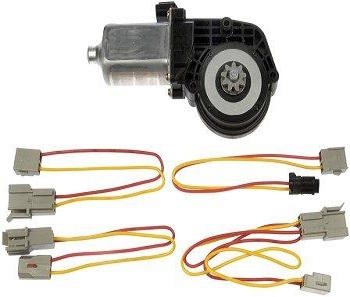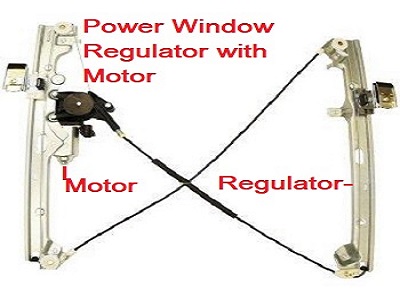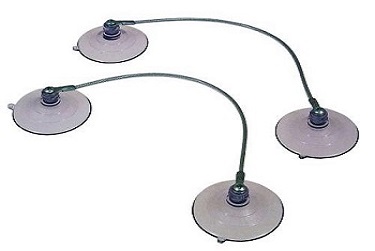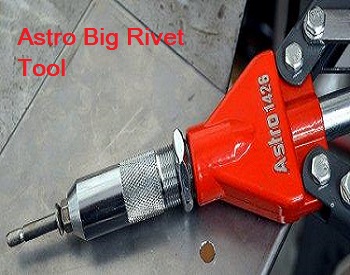Power Window Motor Diagnosis and Repair
Let's see why power window motor diagnosis and repair falls within the wheelhouse of many driveway mechanics.
Unlike some complex car repairs the power window lift motor circuit, switches and actuators remain one of the less complicated systems on the automobile.
With that said, mechanics use a few inexpensive tools that make the job a lot easier.
New Parts: Power Window Motors and Window Regulators for Popular Models.
However, each automobile has its own set of challenges when it comes to replacing the power window motor and regulator assembly.
Not only will we cover this, but we’ll also go over basic diagnosis that reliably pinpoints failed components. Here at fixmyoldride.com we deal with high mileage vehicles.
On these cars the driver side window often gives up before we’re ready to bail out. Living without a power window working on the driver side is more than inconvenient.
Obviously, paying tolls and going through a drive-through becomes extremely difficult. Many live with this, because the repairs at a retail automotive center can reach upwards of $300 to diagnose and repair power window motors and regulators.
 Power Window Repair Kit
Power Window Repair KitFirst Steps for Power Window Diagnosis
Before we dive into power window motor diagnosis and repair let's cover the most common problem when the driver side window fails to go up and down.
The master switch mounted in the driver side door panel becomes the most common problem on older automobiles. These cheap plastic switches get a workout.
They also get exposed to moisture when we roll down the window on rainy days. Before we remove the door panel, take a look at this page about how to diagnose a power window switch.
If it turns out the switch is working fine then you have a power window regulator or window lift motor problems.
Now the door panel must come off. Each car maker uses different tricks to hold on this trim panel. A combination of hidden screws and pressure clips can also be model specific.
For this reason I recommend you take a look at the YouTube video that shows how to remove the trim panel on your specific automobile.
Power Window Motor and Regulator Symptoms
Windows that don't go up and down at all often point to a power window motor failure. However, if you have windows that jam or go up and down crooked you could be looking at a window regulator problem.
With that said, in some circumstances you’ll actually find a window track or guide issue. Once again the factory uses cheap plastic guides that connect the glass to the track.
These can become brittle and break over time. With the door panel removed, we can operate the window and watch the glass slide up and down in the tracks.
With a broken guide on one side you see the glass move away from the track as the window is operated in the down position. We'll provide a picture below that shows a typical power window motor and regulator assembly in vehicles built within the last 25 years.
Prior to this car makers used a scissor type window regulator. These old scissor type regulators have a powerful spring that helps lift the window glass. If you have this type of set up, we recommend a professional mechanic because of the danger involved.
 Power Window Regulator and Motor
Power Window Regulator and MotorDiagnosing Power Window Motor Problems
One of the reasons that power window motor diagnosis and repair makes a good DIY project is because of the simple two wire connection at the window lift motor.
This remains easier to deal with than the complex automotive electrical systems found elsewhere on the automobile.
The factory uses a simple 12 V connection and a ground to operate the window in both directions by reversing polarity.
Applying 12 V on one side moves the window up and when reversed, pulls the window down. Some car manufacturers use a different set up, but this is the most common.
You can pull the connector off of the motor and connect a 12 V test light to the two terminals. If you operate the switch in either direction the light should illuminate. If it doesn't you have an electrical problem between the window lift motor and the master switch.
However, if the light operates in both directions you most likely have a power window problem. Sometimes these window motors get stuck and with the harness connected you can operate the switch and tap on the body of the motor with a small hammer.
In some cases the window starts working. With that said, at this point I recommend replacing the window lift motor while you have the door panel off. If it begins working after using the tap method, it won't last for long.
Tips for Replacing the Power Window Motor and Regulator
 Car Door Glass Holding Fixture
Car Door Glass Holding FixtureOne of the problems mechanics run into when replacing the power window motor and regulator comes from the weight of the door glass.
The regulator assembly holds up the glass and when you try to remove it the glass continually gets in your way. They make an inexpensive special tool that holds the glass in any position convenient for you.
This simple device is nothing more than a pair of strong suction cups and a wire. Adjusting where you place the suction cups on the glass can hold the window in different positions including all the way up.
Nevertheless, if I’m removing the window regulator I use a piece of wood to hold the glass up for extra protection. It’s like using a jack stand when lifting an automobile for safety.
You don't want to have your hands inside the door and have the glass come crashing down. This is also a good way to break an expensive piece of glass and defeat the purpose of doing it yourself.
I've seen people use a lot of crazy methods, including vice grips and a rag to hold the glass in place. With a cost of around $15, I don't see any reason why you shouldn't get the tool designed for the job.
Removing and Replacing the Window Regulator Assembly
 Big Rivet Hand Tool
Big Rivet Hand ToolSpeaking of the right tool for the job, let's talk about how many car manufacturers attach the window regulator and motor assembly to the shell of the door.
On the factory assembly line, they often use heavy-duty rivets. As the name suggests it's basically a regular rivet, but about three or four times the size.
The installation of a rivet allows the glass to pass close to the mounting area without touching the retainer itself. In some cases you can replace the rivet with a nut and bolt and cut the back side of the bolt so it doesn't rub against the glass.
As far as removing these heavy-duty rivets they can be difficult. Professional mechanics drill out the center of the rivet and then pop the head off using a hammer and chisel.
However, when the rivet does come loose the glass will come down unless you have the above-mentioned holding fixture in place.
When it comes to reinstalling the replacement power window regulator and motor assembly it's recommended to use the same fasteners used at the factory.
Although you can use a nut and bolt in some situations, in others it won't work at all. A heavy duty large rivet tool runs in the $20 range brand-new.
In addition, some auto parts stores lend the tool out when you buy the replacement power window regulator or motor from them.
Final Thought about DIY Power Window Repair
DIY power window motor diagnosis and repair isn't right for everybody. However, the money you can save on doing these repairs yourself becomes substantial motivation for at least looking into the repairs.
You can take the door panel off and diagnosed the problem as described above. Then take a look at how the window regulator and motor attaches to the glass and the door shell.
This way you make an educated decision on whether the repairs fall within your level of skill. Complete window motor and regulator kits come in at a fraction of the price of what an auto repair center will charge you for the very same parts.
The labor involved with these repairs falls in the two or three labor hours range at the shops going rate.
The possibility of saving hundreds of dollars on the total repair leaves room to purchase the two special tools mentioned above and still save a decent amount of money. Plus, this probably won't be the last car you'll perform power window motor diagnosis and repair on.
Author bio : Mark is a retired ASE certified master technician, Chevrolet Professional Service Council member and the founder of FixMyOldRide.com. Watch the video on the about Mark the mechanic page to see his credentials. Mark hand writes all of the articles on FixMyOldRide.com unless indicated otherwise.